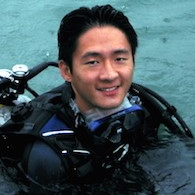Enhancing Marine Biodiversity of the Urban Coast
A special issue of Journal of Marine Science and Engineering (ISSN 2077-1312). This special issue belongs to the section "Marine Biology".
Deadline for manuscript submissions: closed (5 November 2021) | Viewed by 5031
Special Issue Editors
Interests: coral reef ecology; reef restoration and conservation; integrated coastal management
Special Issues, Collections and Topics in MDPI journals
Interests: coral reef ecology; evolution and conservation
Special Issues, Collections and Topics in MDPI journals
Special Issue Information
Dear Colleagues,
Coastal urbanisation has resulted in drastic modification of the natural coastline and, in many cases, the loss of natural habitats and and their associated biodiversity. The loss of ecosystem services compromises environmental quality and affects the livelihood of communities that are dependant on coastal resources. Maintaining biodiversity and ecosystem functioning of the urban coast remains imperative. Modified coasts, however, can serve as new habitats capable of supporting different biological assemblages, although a decline in species richness is expected. Can the urban coast be developed such that it can enhance biological diversity? It is possible that approaches such as restoration and ecological engineering should be more widely considered in order that coastal modification can be conducted with the aim of “reclaiming” marine biodiversity. Studies focused on enhancing the marine biodiversity of the urban coast will help to influence the incorporation of biodiversity support features in future coastal development.
Prof. Dr. Loke Ming Chou
Dr. Danwei Huang
Guest Editors
Manuscript Submission Information
Manuscripts should be submitted online at www.mdpi.com by registering and logging in to this website. Once you are registered, click here to go to the submission form. Manuscripts can be submitted until the deadline. All submissions that pass pre-check are peer-reviewed. Accepted papers will be published continuously in the journal (as soon as accepted) and will be listed together on the special issue website. Research articles, review articles as well as short communications are invited. For planned papers, a title and short abstract (about 100 words) can be sent to the Editorial Office for announcement on this website.
Submitted manuscripts should not have been published previously, nor be under consideration for publication elsewhere (except conference proceedings papers). All manuscripts are thoroughly refereed through a single-blind peer-review process. A guide for authors and other relevant information for submission of manuscripts is available on the Instructions for Authors page. Journal of Marine Science and Engineering is an international peer-reviewed open access monthly journal published by MDPI.
Please visit the Instructions for Authors page before submitting a manuscript. The Article Processing Charge (APC) for publication in this open access journal is 2600 CHF (Swiss Francs). Submitted papers should be well formatted and use good English. Authors may use MDPI's English editing service prior to publication or during author revisions.
Keywords
- coast
- urban
- modified
- marine biodiversity
- restoration
- enhancement
- ecological engineering






